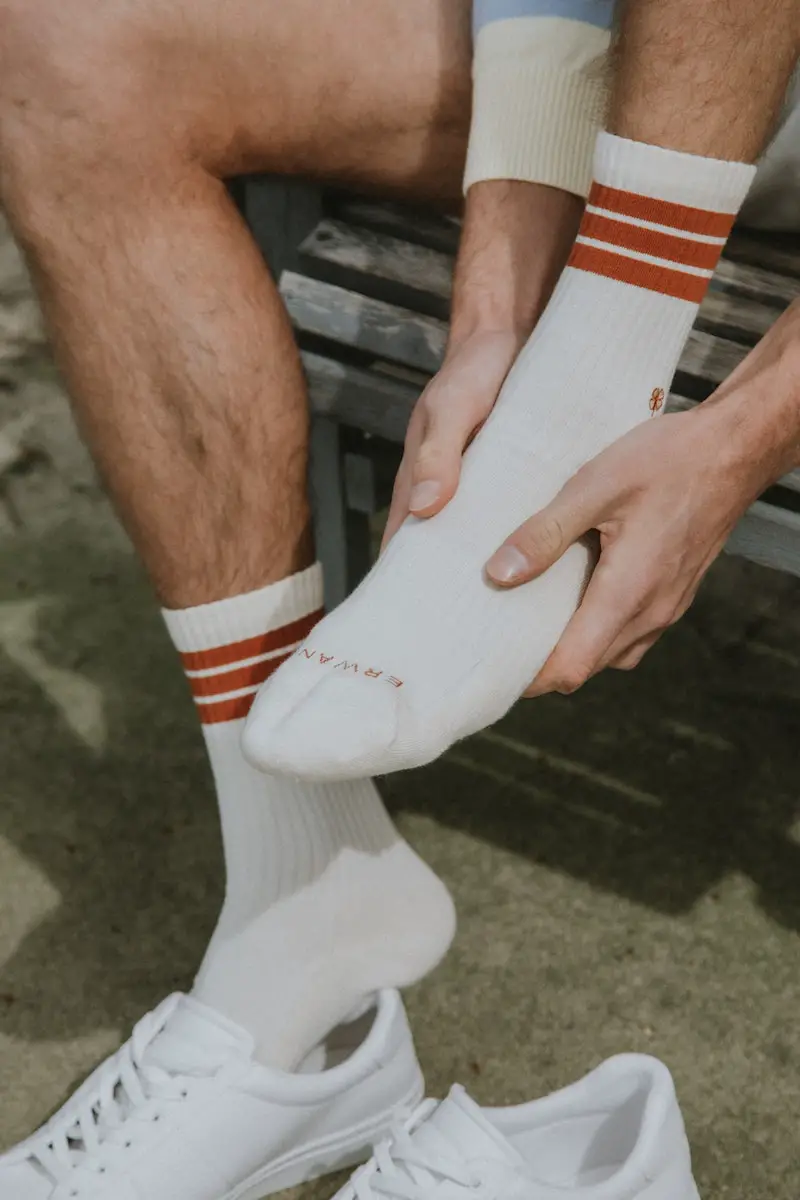If you’re like me and you’ve caught the pickleball bug, you know it’s not just a game – it’s a lifestyle. But with any sport, there’s always the risk of injury. In the world of pickleball, it’s no different.
From sprained ankles to tennis elbow, pickleball injuries can put a serious damper on your game. Understanding these injuries, their causes, and how to prevent them is key to keeping you on the court.
In this article, I’ll share some of the most common pickleball injuries and provide tips on how to avoid them. So, let’s dive in and keep you playing safe and strong.
Common Pickleball Injuries
Pickleball is indeed a fun and addictive sport. However, it’s also a sport which, if not played carefully, can lead to injuries. An integral part of playing safely is understanding the common injuries that can occur and the ways to prevent them.
One often overlooked yet prevalent injury in this sport is lateral epicondylitis or tennis elbow. This injury occurs when you overuse your elbow’s muscles, which can happen when there’s continuous heavy paddle action. Poor technique can also exacerbate the problem.
Similarly, another frequently encountered issue is patellar Tendinitis, known as jumper’s knee. It’s an overuse injury that affects players who jump a lot during the game or fail to warm up properly beforehand.
Shoulder injuries also make the list, given that pickleball involves an abundance of upper body movement. Rotator cuff damage can easily occur due to repetitious overhead shots.
Let’s not forget about ankle sprains. This injury is quite common due to the sport’s need for sudden lateral movements. Even if you’re careful, a single misstep can lead to a twist and a painful sprain.
Taking an overview, below is a summarized list of common pickleball injuries; rather a concise inventory of pain prone regions.
| Injuries | Known As | Reason |
|---|---|---|
| Lateral Epicondylitis | Tennis Elbow | Overuse of elbow muscles |
| Patellar Tendinitis | Jumper’s Knee | Overuse of knee, bad warmup |
| Rotator Cuff Injuries | N/A | Repetitive overhead shots |
| Ankle Sprains | N/A | Sudden lateral movements |
Knowing the risks can guide us to identify the necessary precautions and gear requirements for this sport. Not just that, it can also help direct training efforts to prevent these injuries in the first place.
Sprained Ankles: Causes and Prevention
Transitioning, let’s now shift our focus to – sprained ankles. This injury is quite frequent as players often need to move swiftly and suddenly, which can lead to twisting or rolling their ankle.
Understanding the cause of sprained ankles is the first step towards preventing them. The root cause of most ankle sprains is lateral instability. That’s a fancy way of saying that when you put sideways pressure on an already unstable joint, you’re going to increase the chance of spraining your ankle.
For pickleball players, the risk of spraining their ankles increases due to sudden shifts in direction, jumps, and pivots. Moreover, poor court conditions or inappropriate footwear also contribute to these injuries.
So what’s the solution? Thankfully, you can take several steps to prevent sprained ankles. I’d recommend starting with, quite literally, strengthening your feet and ankles. Regularly doing exercises that build muscle in these parts can decrease your susceptibility to such injuries.
Remember to always warm-up before you hop on the court. Warming up increases blood flow to your muscles and makes them more flexible, which can help to prevent injuries.
Another prevention strategy is wearing proper shoes. It goes beyond just buying expensive athletic shoes. Ensure you’ve got footwear designed for court games, which provide both comfort and lateral support to your feet.
Consider using braces or sports tape for extra ankle support. Especially if you’ve had a history of ankle sprains, these can act as an external support system and help prevent a repeat injury.
| Prevention Tips | Description |
|---|---|
| Strengthen your feet and ankles | Regularly do exercises that improve the strength of your feet and ankles |
| Warm-up before playing | Increase blood flow and flexibility to prevent injuries |
| Wear proper shoes | Invest in court-game specific shoes for optimal comfort and support |
| Use braces or sports tape | Provide extra support and prevent recurrence of ankle sprains |
Tennis Elbow: Symptoms and Treatment
Stepping into the realm of lateral epicondylitis or tennis elbow, let’s delve into understanding the symptoms and possible treatments. It goes without saying that knowledge of these aspects can play a significant role in its prevention during pickleball.
Tennis elbow is notorious for posing a significant risk to paddle sports enthusiasts. The repetitive action of hitting the ball applies continuous strain on the elbow joint, leading to pain and discomfort.
Noteworthy symptoms of tennis elbow to watch out for within the game include:
- Persistent pain on the outer part of the elbow
- Weak grip strength
- Tenderness around the elbow
Seeking professional consultation at the earliest sign of discomfort can be a game-changer.
What about treatments? Conservatively, I’ll say treatments for tennis elbow are quite simple yet effective. Below are some of the most recommended ways to treat tennis elbow:
- Rest the elbow and keep it elevated.
- Apply an ice pack to the affected area.
- Consider over-the-counter painkillers.
- Gentle exercises under professional guidance.
Let’s not forget the effectiveness of preventative methods. For instance, using a pickleball paddle designed to reduce elbow stress can reduce risk. After all, prevention is better than cure.
It’s important to note that while the above-mentioned treatments can be significantly helpful in managing tennis elbow, they may not always offer a complete cure. Persistent or severe cases of lateral epicondylitis could require physical therapy or even surgery. It’s always wise to consult a medical professional for proper diagnosis and treatment.
As a passionate pickleball player, strive to maintain proper form, flex and relax your forearm muscles regularly, and avoid over-usage. By paying attention to such details, even minor improvements can collectively aid in safeguarding against tennis elbow.
Wrist and Shoulder Injuries: How to Protect Yourself
From our earlier discussion on lateral epicondylitis or tennis elbow, let’s shift focus to another frequent aftermath of an intense game – wrist and shoulder injuries in pickleball. I’m going to delve into symptoms, primary treatment plans, and how best to fend off these common injuries.
Characterized by a sharp, sudden pain, wrist injuries often occur from a fall or a wrong swing, imposing undue stress on the wrist. You’d feel a sharp pain, noticeable swelling or even difficulty in moving your wrist.
Moving up, shoulder injuries in this sport can also sideline you. Common symptoms include pain (which worsens with activity), limited range of motion, or weakness in your shoulder.
Pickleball is undoubtedly a fun-filled sport, but these injuries can hamper your enjoyment. So it’s essential to know how to protect yourself.
Work on your technique. Good form is your first line of defense. A proper swing without overreaching or twisting your hand or shoulder unduly is a critical preventive measure.
Invest in quality equipment. Just like pickleball paddles designed to reduce elbow stress, those developed with wrist and shoulder-friendly angle settings can help alleviate potential injury.
Include strength training in your routine. Regular exercise with a focus on strengthening the muscles and tendons around your wrist and shoulder can further improve resistance to injury.
Listen to your body. This measure is simple yet of utmost importance. When you feel pain, it’s your body ringing an alarm bell. Rest, apply ice, or consult a medical professional depending on the severity.
Treatment plans for wrist and shoulder injuries entail a mix of rest, ice application, pain medication, braces, and physical therapy. Severe cases might even necessitate surgery.
Remember, the key to prevention essentially lies in two areas – mitigating risk factors and enhancing physical resilience. Continue the fun, and let the love of the game not be overshadowed by injuries.
Tips to Prevent Pickleball Injuries
Prevention is key to enjoying a long and healthy pickleball career. Let’s explore some effective methods of injury prevention.
One of the core elements of injury-free play is proper technique. It’s tempting to power through the game with brute force, overlooking the significance of technique. Yet, the correct form and technique can actually lessen the chance of injuries. Enrolling in professional pickleball training classes can help you master these techniques.
Investing in quality equipment is another critical Pickleball injury prevention tip. Wearing proper shoes designed for Pickleball can significantly reduce foot and ankle injuries. Make sure your paddle isn’t too heavy as it can lead to wrist and arm strain.
Strength training also plays a part in preventing injuries. By strengthening the muscles we use most in pickleball, we can reduce the risk of strain. Focus on strength exercises for wrists, shoulders, and legs, investing time in maintaining your core stability.
In addition, it’s essential to listen to your body. Overuse injuries can easily sneak up on you if you’re not careful. If you’re feeling pain while playing, it’s essential to stop and rest. Pushing through the pain can lead to more severe injuries.
While these tips may not fully prevent injuries, they can aid in significantly reducing the chance. It’s always best to keep enjoying the game, prioritizing safety, and maintaining the right balance of fun and competitiveness.
In the event of injuries, various treatment plans are available. From rest and ice application to using braces or even undergoing therapy, the focus should be on recovery without rush. Remember, the best game is that played injury-free.
Conclusion
So there you have it. Pickleball, while incredibly fun, can lead to wrist and shoulder injuries if you’re not careful. It’s crucial to work on your technique and invest in quality gear. Don’t forget to include strength training in your routine. It’s not just about playing the game, it’s about playing it safely. Always listen to your body and take the necessary rest if pain or discomfort arises. If you do get injured, know that there are various treatments available, from rest and ice to physical therapy and even surgery for more serious cases. But remember, prevention is always better than cure. So, stay safe, enjoy the game, and keep those pickleball injuries at bay.














0 Comments